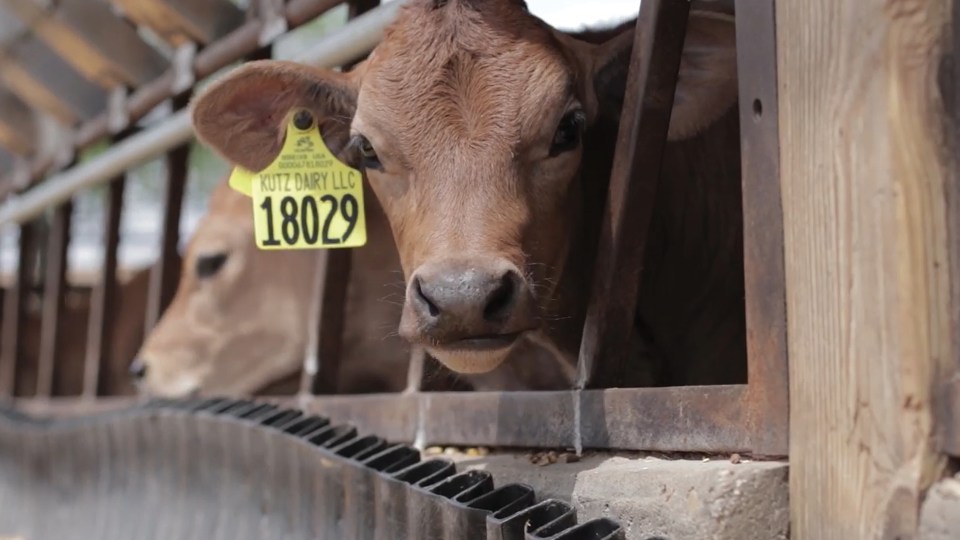BRD: diagnose and treat early for better outcomes
By Dr. Tiago Tomazi
When it comes to bovine respiratory disease (BRD) in calves, it’s typically a matter of “when” and not “if” it will occur. While we know that preventative measures are crucial, even dairy operations with the best management practices can still experience cases of BRD.
A complex disease, BRD occurs from interactions between the host, pathogens and stressors that encourage onset of the disease. This includes environmental factors and stressful events like dehydration, transportation, dehorning, weaning and overcrowding that can increase calves’ susceptibility to BRD viral and bacterial pathogens (Pasteurella multocida, Manheimia haemolytica and Histophilus somni).

Infectious pneumonia is the most common condition associated with BRD, which can lead to permanent lung damage and lower production, causing significant economic losses in dairy operations.1
When BRD does occur, early diagnosis and timely treatment are critical to reduce morbidity and mortality, control transmission, and avoid chronic illness. Earlier intervention also offers a greater chance of success in reducing lung damage that can affect the future performance of the animal.
Importance of early diagnosis
A recent publication shows that heifers diagnosed with BRD during calfhood have a higher likelihood of dying or being removed from the herd before their first calving, compared with heifers that did not experience BRD.2 In addition, heifers experiencing calfhood BRD had lower average daily gain (ADG) and produced less milk during their first lactation by 267.2 lbs.
The importance of recognizing signs of BRD as early as possible cannot be understated; however, this can be challenging because cattle naturally hide signs of disease. Although this instinctive strategy was useful to avoid becoming a meal from potential predators, it now makes identifying diseases in the early stages difficult for caretakers. By the time signs of illness are noticeable, the animal has likely been sick for at least a few days already.
A good calf caretaker must be a keen observer to detect the first signs of BRD, when the disease is in its early stages and the pathogens have not yet reached the lungs. While clinical signs are less evident during this time, the chance of the animal responding to treatment is much greater.
Signs of BRD3 in newly infected calves can be subtle. Look for:
- Mild depression and lethargy
- Sleepy appearance
- Less interest in surroundings
- Reduced urge to eat or to drink milk
- Slow, purposeless movement
- Slightly bowed heads
- Greater ocular and nasal secretions (may be clear)
- More frequent nostril cleaning using tongue
Clinical signs3 that show evidence of the animal being in a more advanced stage of the disease include:
- Severe depression
- Heavy breathing
- Sunken eyes
- Intermittent cough
- High fever
- Purulent nasal discharge
While BRD may be caused by viruses and/or bacteria, if a virus is involved, a secondary bacterial infection is likely to occur. The presence of the clinical signs described above, plus the presence of a fever (rectal temperature >103.5 F), indicate a bacterial infection.
Choosing the best treatment course
Ultimately, we want to eliminate the causative pathogen and put sick calves back on track as soon as possible. Antibiotics remain the most effective tools for treating BRD caused by bacterial pathogens when utilized early in the disease’s progression.
Consider the following factors when choosing antibiotics for the treatment of BRD on your farm:
- Proven efficacy
- Spectrum of activity
- High tissue concentrations after injection
- Fast reduction of fever
- Farm’s historical antimicrobial susceptibility profile
Compounds such as florfenicol, tildipirosin and tulathromycin are proven effective against the prevalent bacteria that cause pneumonia in dairy cattle. These antimicrobials also have a long-lasting effect on the lungs4, so a single injection is usually sufficient to treat BRD cases.
A University of Wisconsin Veterinary Diagnostic Laboratory report examined trends in antimicrobial resistance for the most important bacterial pathogens associated with BRD.5 Of the 4,261 isolates identified, the percentage for each pathogen was:
- 49% P. multocida
- 30% M. haemolytica
- 18% H. somni
When comparing 2013-17 to 2008-12, the overall percentage of resistant isolates for P. multocida decreased, whereas the percentage of resistant isolates for M. haemolytica and H. somni increased. However, the BRD isolates had the lowest resistance overall to florfenicol among the antibiotics frequently used on dairy farms.
A commercial product is available for BRD treatment that combines the effective antibiotic florfenicol with a fast-acting, non-steroidal anti-inflammatory drug (NSAID), flunixin meglumine. The benefit of using an NSAID is that it helps reduce fever due to BRD, a critical component to support recovery.
As is always recommended, discuss all treatment decisions with your veterinarian.
Prevention is always first
It is nearly impossible to discuss BRD diagnosis and treatment in dairy herds without including the most important factor in controlling the disease: prevention.
- Management practices: Even healthy animals supported by good vaccination protocols can develop disease if the infectious challenge is too high. Therefore, it’s critical to prevent or alleviate the environmental risk factors of BRD through proper management practices (monitoring, food and water, clean and dry area, etc.).
- Prenatal care: If a dam faces severe challenges while pregnant, such as nutritional deficiencies and imbalances, disease occurrences or chronic stress, the organs of the fetus will not develop properly and affect the calf’s capacity to respond to challenges later in life.
- Colostrum: A calf’s resilience against pneumonia-causing organisms is triggered by passive immune transfer through proper colostrum ingestion. Feed calves the adequate volume of high-quality colostrum from healthy cows to improve their immune defenses. Remember, colostrum is the most important meal a calf will ever receive.
- Vaccination: The use of effective vaccines enhances the calf’s immune system and reduces BRD incidence. Most respiratory infections begin on the surface of the intranasal mucosa, so intranasal vaccination is recommended for optimal protection. Intranasal vaccines are also effective in the face of maternal immunity, generating protective antibodies in the mucosal surfaces of the respiratory tract. Use a vaccine containing antigens from the important viruses and bacteria associated with BRD.
Remember, every day a calf is sick, its performance suffers. Anything we can do to identify a sick calf earlier and administer the right treatment is going to help it recover faster and grow into a productive cow.
Consult your veterinarian to see what you can do to implement an effective program to ensure timely and accurate BRD diagnosis as well as the best treatment protocol for your farm management and challenge conditions.
References
- Lekeux P. Bovine respiratory disease complex: a European perspective. Bov. Pract. 1995;29:71-75.
- Buczinski, S., Achard, D. & Timsit, E. Effects of calfhood respiratory disease on health and performance of dairy cattle: A systematic review and meta-analysis. J. Dairy. Sci. 104, 8214-8227, doi:https://doi.org/10.3168/jds.2020-19941 (2021).
- Griffin D. Economic impact associated with respiratory disease in beef cattle. Vet. Clin. North Am. Food Anim. Pract. 1997;13:367-377.
- Menge M et al. Pharmacokinetics of tildipirosin in bovine plasma, lung tissue, and bronchial fluid (from live, non-anesthetized cattle). J. Vet. Pharm. Ther. 2011;1349:1365-2885.
- Holschbach, C. L., Aulik, N., Poulsen, K. & Ollivett, T. L. Prevalence and temporal trends in antimicrobial resistance of bovine respiratory disease pathogen isolates submitted to the Wisconsin Veterinary Diagnostic Laboratory: 2008-2017. J. Dairy. Sci. 103, 9464-9472, doi:10.3168/jds.2019-17570 (2020).
Find more content for your dairy operation.
About the author

Tiago Tomazi
Ph.D., D.V.M.,
Dairy Technical Services,
Merck Animal Health
